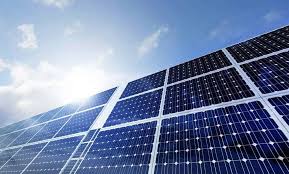MONOCRYSTALLINE AND POLYCRYSTALLINE SOLAR PANEL
Overview of monocrystalline and polycrystalline solar panel Types
A solid understanding on monocrystalline and polycrystalline solar panel will enhance your decision making as solar energy is one of the most sustainable and environmentally friendly sources of power available today. As solar technology has advanced, a variety of solar panel types have emerged, each designed to cater to different needs and applications. Choosing the right type of solar panel can significantly impact the efficiency, cost, and suitability of your solar energy system. This article delves into the differences between monocrystalline and polycrystalline types of solar panels, focusing on their construction, appearance, efficiency and cost.
There are many types of solar panels widely available on the market but monocrystalline and polycrystalline carry distinct characteristics and advantages, making them suitable for different environments and applications.
1.Monocrystalline Solar Panels
2.Polycrystalline Solar Panels
Monocrystalline Solar Panels: Construction and Appearance
Monocrystalline panels are made from a single, continuous crystal structure, typically silicon. This manufacturing process results in solar cells with a uniform black appearance and rounded edges.

Efficiency
Monocrystalline panels are the most efficient type of solar panels, with efficiency ratings typically ranging between 17% and 22%. This high efficiency is due to the purity of the silicon used, which allows electrons to flow more freely.
Advantages
High Performance: They perform exceptionally well in both low-light conditions and high temperatures.
Space Efficiency: Due to their high efficiency, fewer panels are required to produce the same amount of power compared to other types, making them ideal for installations with limited space.
Longevity: Monocrystalline panels often come with warranties of 25 years or more, reflecting their durability and reliability.
Polycrystalline Solar Panels: Construction and Appearance
Polycrystalline panels are made from fragments of silicon melted together, resulting in a blue, speckled appearance. Unlike monocrystalline panels, they do not have a uniform structure, which slightly affects their efficiency.

Efficiency
Polycrystalline panels are less efficient than their monocrystalline counterparts, with efficiency ratings typically between 15% and 18%. This is because the electron movement is less efficient due to the multi-crystal structure.
Advantages
Lower Cost: These panels are cheaper to produce, making them more affordable for consumers.
Eco-Friendly Manufacturing: The production process generates less waste compared to monocrystalline panels.
Conclusion
The choice of solar panel type depends on individual needs, such as budget, available space, and intended use. Monocrystalline panels are the most efficient but come at a higher cost, while polycrystalline panels offer a cost-effective alternative with moderate performance. By understanding the differences between these types, consumers and businesses can make informed decisions, maximizing the benefits of solar energy.
Investing in the right solar technology ensures a sustainable energy solution tailored to specific requirements, contributing to a greener future.

